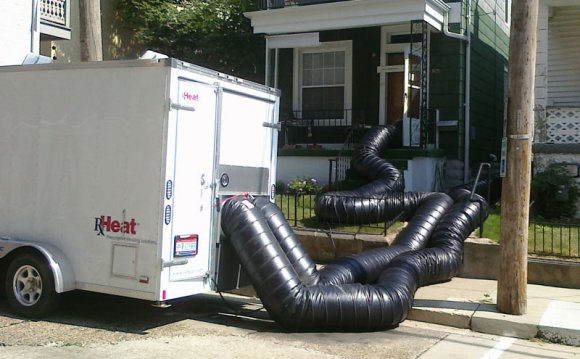
Bed bugs can be brought in from the outside at any time, so we can’t guarantee that your homewill never have bed bugs again. No credible provider can make that promise. We can guarantee that our customized solution will be effective for at least 30 days.
If bed bugs return to your home within 30 days of the completion of our service, we will re-treat at no additional charge.
Appearance
Bed bugs are flat, reddish-brown, oval insects up to 4 to 5 mm long or the size of an apple seed. Swollen and reddish after a blood meal. For more information, see What do Bed Bugs Look Like?
Behavior, Diet & Habits
Bed bugs only feed on blood. Under cool conditions, bed bugs have been able to survive up to a year without a meal. They prefer to be more active at night when the host is asleep.
Bed bugs are found in cracks and crevices, including mattress seams, sheets, furniture, behind baseboards, electrical outlet plates and picture frames. Often found in hotels, where they can travel from room to room and in visitors’ luggage or other personal belongings such as purses and briefcases.
Signs of a Bed Bug Infestation
1Seeing the bugs. Adult bed bugs are about the shape and size of an apple seed.
2Case skins. As the juvenile bugs grow, they shed their skins, discovery of which can indicate their presence.
3Defecation. After feeding, bed bugs return to their harborage to hide where they defecate black to brown stains on porous surfaces or black to brown mounds on nonporous surfaces.
4Bites also may indicate bed bug activity, but further signs will need to be found, since other sources can cause red welts on the skin.
You can pick up bed bugs almost anywhere — offices, stores, hotels and gyms for starters. They’re great at hiding and have been known to hitchhike in luggage, personal belongings or even you. Once indoors, they can be very difficult to control without the help of an experienced pest specialist. You can reduce your chances of a costly bed bug infestation by catching them early.
Tips
- Remove all clutter from your home, which makes finding bed bugs easier.
- Wash and dry your bed linens on the hottest temperature permitted.
- Closely inspect any second-hand furniture before bringing it in your home.
- Inspect your home after moving, trips, service calls or overnight guests.
Bed Bug Bites
Bed Bugs feed exclusively on blood, and people have various responses to Bed Bug Bites. To identify, learn about symptoms etc, see .
Bed Bugs can multiply quickly, so early detection is critical to help prevent an even larger infestation. Our integrated A.I.M. protection process works to assess your home, implement solutions, and monitor any bed bug problems you may face.
How our A.I.M. process works…
Inspection
If you have seen evidence of bed bugs or want to help protect your home against this multiplying intruder, your Orkin Man will come and inspect your home.
Bed bugs are sneaky and hard to find, but your Orkin Man is trained to pinpoint evidence if they are around. On the first visit, he will examine your entire home including the bed, furniture, rugs, and linens. He will conduct an inspection
of target areas, and if required, use tools to check cracks and crevices.
Your Orkin Man will usually start in the bedroom and work his way through your home, concentrating on the furniture and the areas immediately surrounding the furniture. He will look for signs of bed bugs including:
- Live or dead bed bugs
- Skins cast off during the molting process
- Small spots of reddish-black fecal material
- Tiny cream-colored eggs usually found in dark crevices
Getting the Job Done
Upon completion of the inspection and an assessment of the situation, your Orkin Man will recommend the best course of action. If the inspection confirms an infestation, your Orkin Man will recommend a treatment plan based on the severity
of the infestation and your preferences.He will use the best tools and science to address the causes and treat your bed bug problem in the best way for your family, pets, and the environment. This implementation method targets bed bugs as
well as the bed bug larvae — preventing them from maturing into breeding, biting, and potentially disease-carrying adults.
Peace of Mind
Bed bugs can be difficult to eradicate; so your Orkin technician will perform a follow-up visit to help ensure the effectiveness of the professional treatment that was performed. Additionally, your Orkin technician will document the visit and recommend next steps to ensure the best maintenance approach for your home.
More Information
Bed bugs (often misspelled as bedbugs) are small, nocturnal, wingless insects that belong to the family of Cimicidae. They feed on human blood and other warm-blooded hosts. They are oval in shape and grow up to 4 to 5 mm long when fully grown. Their skin color is rust brown to a deeper red brown. Bed bugs are also known as “mahogany flats, ” “red coats” and “chinches.” The adult bed bug does not have wings and has a flattened body.

Bed Bugs Petri Dish
Bed bugs are both dorsoventrally flattened and thin, which creates a great advantage for them. They can hide in unusual places such as behind baseboards, floor cracks, and under carpets or behind loose wallpaper, which can make them difficult to detect. Not only can they be hard to detect, but bed bugs also tend to stay close together and have a distinctively sweet, yet unpleasant smell. Fecal smears on mattresses and nearby furnishings are also signs of a bed bug infestation. Their bites can leave itchy welts on the skin and can cause allergic reactions, such as severe itching, though not everyone reacts to their bite. Bed bugs have existed since the ancient times and are found throughout the world. There are different species of bed bugs, but the common bed bug (Cimex lectularius) is particularly adaptable to human environments. Other species are known to prefer birds and bats but also will feed on humans if necessary. Since they can survive in birds’ nests, they can be seen in houses and buildings that have several bird nests, particularly on rooftops. . Bed bugs have a great worldwide distribution, due to human travelers who transport them in luggage, clothing, bedding and furniture. Though they may reside in unusual places, they are also likely to be found in small cracks near a bed or in comforters and bed sheets.
RELATED VIDEO












